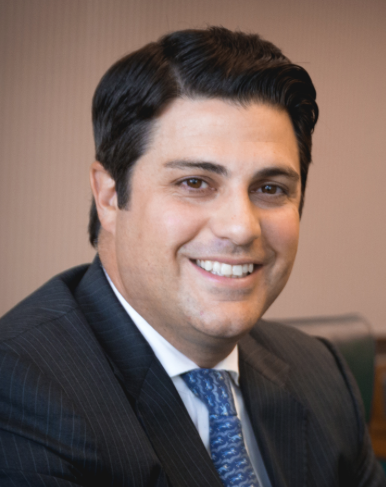In July, the U.S. stock market demonstrated remarkable strength, as the S&P 500 continued its upward trajectory, securing its fifth consecutive positive month and achieving its longest streak of monthly gains since August 2021. Additionally, the Dow Jones Industrial Average witnessed its largest two-month gain since November 2022, and within the same month, it tied a record with an impressive 13 straight daily gains. Not to be outdone, the Nasdaq Composite also excelled, marking its fifth consecutive month of growth and best 5-month stretch since September 2020.
Overall, July’s gains served as the cherry on top of what has already been a strong year for equities. The outstanding performance was backed by encouraging economic data and robust earnings reports, further solidifying investors’ confidence.
On July 26, the Federal Reserve announced a 25bps rate hike at the end of its two-day policy meeting, bringing the targeted federal funds rate to 5.25-5.50%. This rate hike brings the benchmark borrowing costs to their highest level in more than 22 years. Fed Chair Jerome Powell stressed that the central bank is seeking proof that inflation is “durably down” and will make their decisions “meeting by meeting based on the totality of incoming data”. Powell emphasized that current economic conditions will likely require monetary policy to be more restrictive for longer until the committee is confident that inflation is coming down sustainably to their 2% target. The next FOMC meeting is September 19-20.
Small cap stocks helped led the rally during the month with the Russell 2000 Value recording its best 2-month stretch since November 2022. We continue to see abundant opportunities in small to mid-cap stocks, given the compelling valuation of the Russell 2000 Value, which currently trades at only 10-12x earnings. This stands in stark contrast to the broader market, which hovers closer to 20x earnings, representing one of the biggest deltas we have ever witnessed.
M&A was bolstered by deals that made significant progress in gaining regulatory approvals. Microsoft defeated the U.S. Federal Trade Commission’s attempt to block it’s $73 billion acquisition of videogame maker Activision, and the U.K. CMA reversed course and is working with Microsoft to find a deal structure that would satisfy its competitive concerns. The spread to the $95 deal price narrowed considerably and the companies extended their merger agreement and effective increased the deal price by allowing Activision to pay a $0.99 per share pre-closing dividend. VMware and Broadcom secured approval from the European Commission and provisional clearance from the U.K. CMA for their $85 billion deal, the parties still need U.S. and Chinese approvals. L3Harris Technologies secured FTC clearance to acquire rocket engine maker Aerojet Rocketdyne for $58 cash per share ($5 billion) and the deal closed on July 28th. We are heartened to see companies successfully defending the merits of their transactions despite regulatory objections.
July saw a continuation of the risk-on environment and the convertible market moved higher, bringing YTD returns into double digits. The rally was driven by some positive earnings reports along with expectations of a soft landing in the U.S. as inflation moderated. Balanced convertibles led the way in what was another broadly positive month. Fund performance was in line with the global market for the month with some of our equity sensitive holdings leading the way in our portfolio. We still see opportunity in a balanced convertible portfolio. While the market continued a risk-on stance in July, investors are right to be wary of certain returning to previous highs. Convertibles offer a risk adjusted way to participate in this market.
New convertible issuance stalled this month as many companies focused on reporting earnings. We are still on track for a better year of issuance than we saw in 2022. Issuance this year has generally been attractive with higher coupons, lower premiums and more asymmetrical returns than are available in the secondary market. We have continued to see companies buying back convertibles in a transaction that is accretive to earnings and positive for the credit.
Opinion article by Michael Gabelli, Managing Director and President of Gabelli & Partners.
To access our proprietary value investment methodology, and dedicated merger arbitrage portfolio we offer the following UCITS Funds in each discipline:
GAMCO MERGER ARBITRAGE
GAMCO Merger Arbitrage UCITS Fund, launched in October 2011, is an open-end fund incorporated in Luxembourg and compliant with UCITS regulation. The team, dedicated strategy, and record dates back to 1985. The objective of the GAMCO Merger Arbitrage Fund is to achieve long-term capital growth by investing primarily in announced equity merger and acquisition transactions while maintaining a diversified portfolio. The Fund utilizes a highly specialized investment approach designed principally to profit from the successful completion of proposed mergers, takeovers, tender offers, leveraged buyouts and other types of corporate reorganizations. Analyzes and continuously monitors each pending transaction for potential risk, including: regulatory, terms, financing, and shareholder approval.
Merger investments are a highly liquid, non-market correlated, proven and consistent alternative to traditional fixed income and equity securities. Merger returns are dependent on deal spreads. Deal spreads are a function of time, deal risk premium, and interest rates. Returns are thus correlated to interest rate changes over the medium term and not the broader equity market. The prospect of rising rates would imply higher returns on mergers as spreads widen to compensate arbitrageurs. As bond markets decline (interest rates rise), merger returns should improve as capital allocation decisions adjust to the changes in the costs of capital.
Broad Market volatility can lead to widening of spreads in merger positions, coupled with our well-researched merger portfolios, offer the potential for enhanced IRRs through dynamic position sizing. Daily price volatility fluctuations coupled with less proprietary capital (the Volcker rule) in the U.S. have contributed to improving merger spreads and thus, overall returns. Thus our fund is well positioned as a cash substitute or fixed income alternative.
Our objectives are to compound and preserve wealth over time, while remaining non-correlated to the broad global markets. We created our first dedicated merger fund 32 years ago. Since then, our merger performance has grown client assets at an annualized rate of approximately 10.7% gross and 7.6% net since 1985. Today, we manage assets on behalf of institutional and high net worth clients globally in a variety of fund structures and mandates.
Class I USD – LU0687944552
Class I EUR – LU0687944396
Class A USD – LU0687943745
Class A EUR – LU0687943661
Class R USD – LU1453360825
Class R EUR – LU1453361476
GAMCO ALL CAP VALUE
The GAMCO All Cap Value UCITS Fund launched in May, 2015 utilizes Gabelli’s its proprietary PMV with a Catalyst™ investment methodology, which has been in place since 1977. The Fund seeks absolute returns through event driven value investing. Our methodology centers around fundamental, research-driven, value based investing with a focus on asset values, cash flows and identifiable catalysts to maximize returns independent of market direction. The fund draws on the experience of its global portfolio team and 35+ value research analysts.
GAMCO is an active, bottom-up, value investor, and seeks to achieve real capital appreciation (relative to inflation) over the long term regardless of market cycles. Our value-oriented stock selection process is based on the fundamental investment principles first articulated in 1934 by Graham and Dodd, the founders of modern security analysis, and further augmented by Mario Gabelli in 1977 with his introduction of the concepts of Private Market Value (PMV) with a Catalyst™ into equity analysis. PMV with a Catalyst™ is our unique research methodology that focuses on individual stock selection by identifying firms selling below intrinsic value with a reasonable probability of realizing their PMV’s which we define as the price a strategic or financial acquirer would be willing to pay for the entire enterprise. The fundamental valuation factors utilized to evaluate securities prior to inclusion/exclusion into the portfolio, our research driven approach views fundamental analysis as a three pronged approach: free cash flow (earnings before, interest, taxes, depreciation and amortization, or EBITDA, minus the capital expenditures necessary to grow/maintain the business); earnings per share trends; and private market value (PMV), which encompasses on and off balance sheet assets and liabilities. Our team arrives at a PMV valuation by a rigorous assessment of fundamentals from publicly available information and judgement gained from meeting management, covering all size companies globally and our comprehensive, accumulated knowledge of a variety of sectors. We then identify businesses for the portfolio possessing the proper margin of safety and research variables from our deep research universe.
Class I USD – LU1216601648
Class I EUR – LU1216601564
Class A USD – LU1216600913
Class A EUR – LU1216600673
Class R USD – LU1453359900
Class R EUR – LU1453360155
GAMCO CONVERTIBLE SECURITIES
GAMCO Convertible Securities’ objective is to seek to provide current income as well as long term capital appreciation through a total return strategy by investing in a diversified portfolio of global convertible securities.
The Fund leverages the firm’s history of investing in dedicated convertible security portfolios since 1979.
The fund invests in convertible securities, as well as other instruments that have economic characteristics similar to such securities, across global markets (but the fund will not invest in contingent convertible notes). The fund may invest in securities of any market capitalization or credit quality, including up to 100% in below investment grade or unrated securities, and may from time to time invest a significant amount of its assets in securities of smaller companies. Convertible securities may include any suitable convertible instruments such as convertible bonds, convertible notes or convertible preference shares.
By actively managing the fund and investing in convertible securities, the investment manager seeks the opportunity to participate in the capital appreciation of underlying stocks, while at the same time relying on the fixed income aspect of the convertible securities to provide current income and reduced price volatility, which can limit the risk of loss in a down equity market.
Class I USD LU2264533006
Class I EUR LU2264532966
Class A USD LU2264532701
Class A EUR LU2264532610
Class R USD LU2264533345
Class R EUR LU2264533261
Class F USD LU2264533691
Class F EUR LU2264533428
Disclaimer:
The information and any opinions have been obtained from or are based on sources believed to be reliable but accuracy cannot be guaranteed. No responsibility can be accepted for any consequential loss arising from the use of this information. The information is expressed at its date and is issued only to and directed only at those individuals who are permitted to receive such information in accordance with the applicable statutes. In some countries the distribution of this publication may be restricted. It is your responsibility to find out what those restrictions are and observe them.
Some of the statements in this presentation may contain or be based on forward looking statements, forecasts, estimates, projections, targets, or prognosis (“forward looking statements”), which reflect the manager’s current view of future events, economic developments and financial performance. Such forward looking statements are typically indicated by the use of words which express an estimate, expectation, belief, target or forecast. Such forward looking statements are based on an assessment of historical economic data, on the experience and current plans of the investment manager and/or certain advisors of the manager, and on the indicated sources. These forward looking statements contain no representation or warranty of whatever kind that such future events will occur or that they will occur as described herein, or that such results will be achieved by the fund or the investments of the fund, as the occurrence of these events and the results of the fund are subject to various risks and uncertainties. The actual portfolio, and thus results, of the fund may differ substantially from those assumed in the forward looking statements. The manager and its affiliates will not undertake to update or review the forward looking statements contained in this presentation, whether as result of new information or any future event or otherwise.


